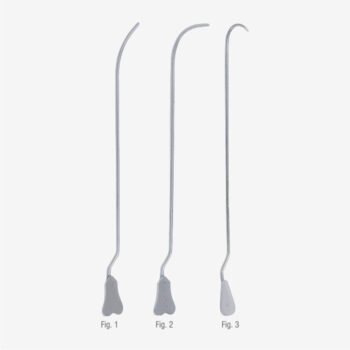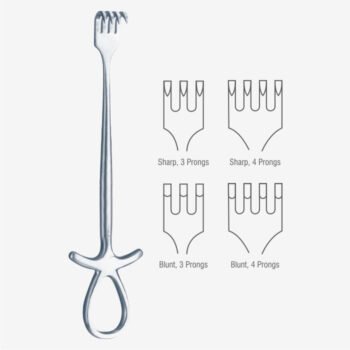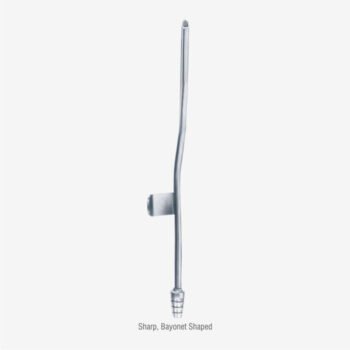The rod of Watson Dermatome (Skin Graft Knife) has no independent movement, either sliding or rotation, while the graft is being taken. At its end-bearings, it passes eccentrically through the bushes; hence, the depth of cut can be set by rotation of the rod with a single knurled control knob, the rod remaining parallel to the blade at all settings. With this arrangement, the bearings can have a precision fit and there is no “play” in use. While cutting the graft, spontaneous rotation of the rod is slight, but a locking lever is provided to avoid accidental alteration of the setting once it has been made.
HISTORICAL INSIGHT
While this fixed guard effectively dealt with the problem of skin rolling around the guard, it introduced a considerable degree of “drag” due to the inability of the guard to slide to and fro with the skin surface. This drag is only partially eliminated by lubrication with liquid paraffin, and the edges of both graft and donor site tend to be rather ragged when a Watson Dermatome (Skin Graft Knife) has been used.
Cobbett proposed a modification to this problem of avoiding drag and still preventing the skin rolling around the guard that would be to have a guard that could slide to and fro but could not rotate. Such a modification to a standard Braithwaite knife was made by cutting a “D” section instead of a circular hole in the guard end of one of the cam levers and grinding a corresponding flat on the side of the end of the guard. This modified knife has little drag and no tendency for the skin to roll up on the guard
REFERENCES: Ameer F, Singh AK, Kumar S. Evolution of instruments for harvest of the skin grafts. Indian J Plast Surg 2013;46:28-35.
| Author Name |
Watson |
|---|---|
| Specialty |
Orthopedic, Plastic Surgery, Skin Grafting |
| Sub-Category |
Skin Graft Knives |
| Category |
Knives, Needles & Picks |
| Handle Type |
Hollow Handle |
| Overall Length |
30.5 cm – 12″ |
| Finish |
Satin |
| Material |
Stainless Steel |
| CE Marking |
Yes |
| Reusable |
Yes |
| Used in Specialties: |
Orthopedic, Plastic Surgery, Skin Grafting, |
|---|---|
| Product Category: | Knives, Needles & Picks, |
| Product Type: | Skin Graft Knives, |







